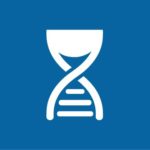USC-BUCK NATHAN SHOCK CENTER OF EXCELLENCE
The USC-Buck Nathan Shock Center of Excellence in the Biology of Aging is a new and fully integrated multi-institutional center focused on training the next generation of geroscientists and providing access to cutting edge geroscience technologies to investigators across the nation.
The USC-Buck NSC aims to provide intellectual leadership and innovation in aging biology and to collaborate substantially with other NSC’s and the Nathan Shock Center’s Coordinating Center currently run by the American Federation for Aging Research. The USC-Buck NSC is devoted to forging a deeper understanding of how and why aging processes cause disease in order to advance the translation of basic research on aging into effective preventions and therapies. Specialized cores provide services to all Shock Center members, as well as for-fee services to the community at large.
The Buck Institute is an independent, free-standing Institute with a laser focus on aging at a phase of rapid growth and USC is a major research university that encompasses all research pillars of aging with extensive resources associated with a large research-focused university. The unique nature of our research infrastructure, which constitutes one of the largest collections of leaders in geroscience research within the US, ensures that the USC-Buck NSC will be an integrated organization that is representative of the wide breadth of topics encompassed by the biology of aging field.
Together, the USC-Buck Nathan Shock Center is greater than the sum of its parts.
CENTER DETAILS
USC-Buck Cores:
Administrative/Program Enrichment Core (APEC)
The Administrative/Program Enrichment Core (APEC) led by Drs. Gordon J. Lithgow and Sean P. Curran aims to integrate the USC-Buck NSC across USC and the Buck Institute for Research on Aging will include more than 61 NIA-supported investigators, six NIA-funded research centers, four NIA T32s, and several additional aging research centers of excellence. The core provides infrastructure support and leadership to the USC-Buck NSC cores, access to essential resources, coordination with other NSCs across the nation, and procurement of matching institutional financial support exceeding $1 million over 5 years.
The Research Development Core (RDC)
The Research Development Core (RDC) led by Drs. Julie K. Andersen and Kelvin Davies will provide training in state-of-the-art methodologies, coordinate Research Sabbaticals in Aging and mentorship opportunities with world-class faculty and educational opportunities. The core will identify pilot project opportunities from a nation-wide search that provides access to all USC-Buck NSC Cores. The goal of this Core is to provide future aging researchers access to the wealth of experience, expertise, and resources at both campuses. These efforts are modeled after our successful joint Biology of Aging PhD program.
The Genomic Translation Across Species Core (GTASC)
The Genomic Translation Across Species Core (GTASC) Core, led by Drs. Eileen Crimmins and Em Arpawong at USC, will overcome a historical barrier of connecting geroscience research in model systems to human health and aging. The core will provide researchers utilizing model-organisms (yeast, worms, flies, fish, and mice) the ability to interrogate a rich resource of human genomic SNP, methylation, and expression data from the NIH Health and Retirement Study (HRS). Analyses of gene-environment and gene-gene interactions and human Phenotype-Wide Association Scans (PheWAS) will provide important results in the context of human aging and facilitate innovative research directions across models.
The Cellular Senescence and Beyond Core (CSBC)
The Cellular Senescence and Beyond Core (CSBC), led by Drs. Judith Campisi and Birgit Schilling at the Buck Institute, will determine how specific cell fates (e.g. senescence, apoptosis, competition) contribute to aging and methods of intervention across models (e.g. cultured cells, organoids, tissue and organ samples, and organisms). The Core will help researchers characterize both cell-autonomous and non-autonomous features of these cell fates, provide established assays, and give advice regarding intervention strategies.
The Geroscience Technology Core (GTC)
The Geroscience Technology Core (GTC), led by Drs. Valter Longo and Simon Melov, will provide vouchers for access to a range of technology platforms and deep expertise in many aspects of aging. This will include access to all existing institutional technology and expertise across various model systems at both institutions. Unique capabilities include studies of air pollution exposure, female reproductive aging, and cutting-edge technologies for single-cell analyses, mitochondria and metabolism, and bioinformatics.
-
 Eric Verdin, MD LeadershipDirector, Buck Institute
Eric Verdin, MD LeadershipDirector, Buck Institute -
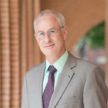 Pinchas “Hassy” Cohen, MD Leadership
Pinchas “Hassy” Cohen, MD Leadership
Director, USC -
 Gordon Lithgow, PhD Administrative Core
Gordon Lithgow, PhD Administrative Core
Director, Buck Institute -
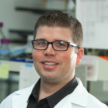 Sean Curran, PhD Administrative Core
Sean Curran, PhD Administrative Core
Director, USC -
 Julie Andersen, PhD Research Development Core (RDC)
Julie Andersen, PhD Research Development Core (RDC)
Core Leader, Buck Institute -
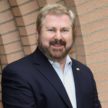 Kelvin Davies, PhD Research Development Core (RDC)
Kelvin Davies, PhD Research Development Core (RDC)
Core Leader, USC -
 Judy Campisi, PhD Cellular Senescence and Beyond Core (CSBC)
Judy Campisi, PhD Cellular Senescence and Beyond Core (CSBC)
Director, Buck Institute -
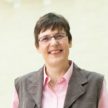 Birgit Schilling, PhD Cellular Senescence and Beyond Core (CSBC)
Birgit Schilling, PhD Cellular Senescence and Beyond Core (CSBC)
Director, Buck Institute -
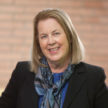 Eileen Crimmins, PhD Genomic Translation Across Species Core (GTAS)
Eileen Crimmins, PhD Genomic Translation Across Species Core (GTAS)
Director, USC -
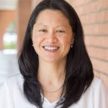 T. Em Arpawong, PhD, MPH Genomic Translation Across Species Core (GTAS)
T. Em Arpawong, PhD, MPH Genomic Translation Across Species Core (GTAS)
Director, USC -
 Simon Melov, PhD Geroscience Technology Core (GTC)
Simon Melov, PhD Geroscience Technology Core (GTC)
Director, Buck Institute -
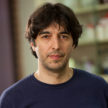 Valter Longo Geroscience Technology Core (GTC)
Valter Longo Geroscience Technology Core (GTC)
Director, USC
The Albert Einstein College of Medicine
To be announced
The Jackson Laboratory
To be announced
The Salk Institute for Biological Studies, the Sanford Burnham Prebys Medical Discovery Institute, and the University of California San Diego
- Ana Chucair-Elliott, Oklahoma Medical Research Foundation: A novel inducible cell-specific mouse model for chromatin accessibility and transcriptomic studies of retina Müller glia in age-related macular degeneration
- Vanessa Delcroix, The Scripps Research Institute:A single-cell atlas of the aging lacrimal gland to understand the mechanisms underlying age-associated dry eye disease
- Maria Clara Guida, Sanford Burnham Prebys Medical Discovery Institute:Investigating the epigenetic drift of aging hearts using Drosophila
- Adam Konopka, University of Wisconsin-Madison: The Metabolic-Epigenomic Network of Metformin and Exercise
- Lara Labarta Bajo, Salk Institute: Astrocyte Plasticity in the Aging Brain
- Maria Mihaylova, The Ohio State University: Characterizing Age-Dependent Changes in the Mammalian Colon
The University of Alabama at Birmingham
To be announced
The University of Oklahoma Health Sciences Center
To be announced
The University of Southern California Leonard Davis School of Gerontology and the Buck Institute for Research on Aging
- Guillaume Chanfreau, University of California Los Angeles: Splicing factor PRPF8 and degenerative disease phenotypes
- Zachary Clayton, University of Colorado Boulder: Using chip cytometry-based digital spatial profiling to elucidate novel mechanisms underlyingaortic stiffening with aging
- Weiwei Dang, Baylor University: Genetic association with Alzheimer disease and neurological outcomes
- Jingjing Li, University of California San Francisco: Construct a deep convolutional neural network to computationally assign cell ages to replicative old yeast cells
- Gordon Lithgow, Buck Institute: Analysis of polymorphisms in candidate human kinases for association with longevity and chronic neurological diseases
- Darcie Moore, University of Wisconsin-Madison: Uncovering the role of intermediate filaments in stress and aging using C. elegans
- John Newman, Buck Institute: HMGCS2 in Human Metabolism and Health
- Alexander Soukas, Massachusetts General Hospital: Sgk3 associations with aging-related metabolic phenotypes
- Dan Winer, Buck Institute: The effects of mechanical tension on cell senescence and its secretory phenotypes
The University of Texas Health Science Center at San Antonio
To be announced
The University of Washington
- Sarah Mitchell, ETH Zürich: Investigation of the effect of late-life interventions on the metabolome in male and female mice
- Christopher Burtner and Andrew Rhyne, Roger Williams University: Adapting the WormBot Technology for the Study of Life Span in Rotifers
The USC-Buck Nathan Shock Center is accepting applications for sabbaticals in the basic biology of aging. These sabbaticals are short-term immersion opportunities to learn specific methods or techniques designed to fulfill objectives based on the applicant’s previous knowledge, experience, specific research interests, and/or training goals. These mini-sabbaticals (that can range in length from 2 weeks to an entire semester) should offer a highly collaborative and supportive academic environment, mentorship, opportunities to participate in organized scholarly activities, access to a workspace, and reasonable access to relevant resources.
Currently, our Nathan Shock Center is accepting applications for sabbaticals during Grant Year 2 within the Cellular Senescence and Beyond Core and the Geroscience Technology Core physically located at the Buck Institute for Research on Aging in Novato, CA.
Application requirements:
- Application Face Page https://grants.nih.gov/grants/funding/phs398/fp1.pdf
- Biosketch (NIH format)
- Description of goals and objectives, including identification of host/mentor (3 pages maximum) and acknowledgment of application by host/mentor
- Budget and justification, submitted in NIH format
Budget Form and Justification
The budget should be developed in conjunction with the host/mentor and can include line items such as the following: travel to the Buck Institute, lodging, meal expenses, ground transportation, funds to support research (i.e., lab supplies, funds for core recharges, etc.). No salary/stipend will be paid to the awardee.
Prior consultation with host/mentor is required.
Applications due January 15, 2022. The award(s) will begin February 1, 2022.
Funds must be used by May 31, 2022 at the end of the Grant Year.


